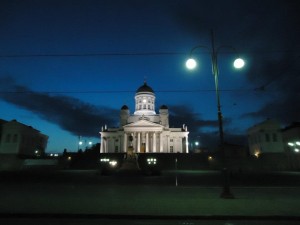Nationalism in the North
PhD students Xin Ying Ch’ng and Jacopo Mazzeo report back about their trip to Helsinki, Finland, for the ‘Confronting the National in the Musical Past’ international conference:
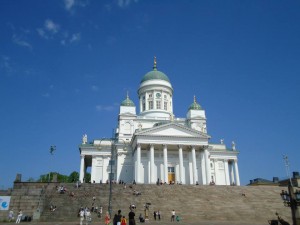
We were greeted with unusually sunny weather upon reaching the Finnish capital the day before the conference. Xin Ying was starting to think that bringing her coat seemed like a waste of luggage space. With Helsinki being that high up in the Northern hemisphere, at this time of the year we wouldn’t be lacking any sunshine for the week. The sun rises around 4 am and doesn’t set fully until past midnight!
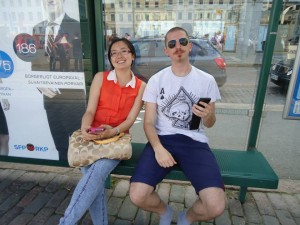
Helsinki is a port city and very easily accessible by public transportation. We went everywhere using the trams that were well connected around the city. And speaking of trams, Jacopo couldn’t contain his excitement when we saw the bright red Spårakoff pub tram, a tram-converted-bar taking passengers on a ‘pub crawl’ around the city. They say you haven’t been to Finland if you have not been to a Finnish sauna, and our hostel came with one on the top floor. Xin Ying couldn’t resist trying out the sauna but really couldn’t be in it more than 10 minutes.
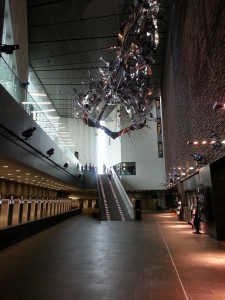
The conference was held in the Musiikkitalo (Helsinki Music Center), a brand-new building right in the middle of the city centre, just in front of the Parliament of Finland. The Musiikkitalo houses the Sibelius Academy, the Helsinki Philharmonic Orchestra and the Finnish Radio Symphony Orchestra. The conference itself was relatively small, with about 50 attendants. Among them were mostly young scholars and researchers of various backgrounds and provenance. It definitely had a vibrant atmosphere, with a wide range of interests and a slight focus on Finnish nationalism. Our panel – ‘Reinventing National Musical Identities in the Twentieth Century’ – was scheduled to be on the first day. Among the other papers, topics were as diverse as ‘The Local and Transnational Identifications of the Early Finnish Hymn Makers’ to ‘A Short History of English-singing Popular Music in France’. The three keynote speakers, Celia Applegate, Philip Bohlman, and Tomi Mäkelä all presented extremely captivating papers. Mäkelä’s ‘Teaching Music Nationally: On the Configuration of Scandinavian, Nordic and Local Images in the History of Music and Music Education’ interested both of us the most. He responded to music-teaching method books for young children, and how the pictures and repertoires shaped and confined nationalistic identities.
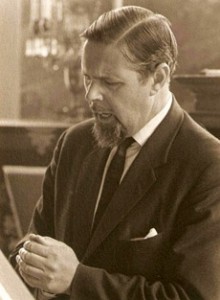
Jacopo’s paper, ‘Shaping “Italian Music”: Cosmopolitan Nationalism in Alfredo Casella’ discussed the Italian composer’s contribution in developing an Italian nationalist musical idiom in the turn of the 20th century. Using Casella’s diverse, cosmopolitan background in negotiating his influence in the musical sphere, Jacopo’s paper shed light on how political influences and cultural background are important in discussing nationalist significances and nationalism in 20th century Italy. My paper, ‘What is an ‘English’ Voice? : Alfred Deller and the English Musical Renaissance’ related to nationalism in the context of a voice in Alfred Deller, the first solo countertenor to ever make a career out of his voice type. Deller’s voice justified the recurrence of an English Golden Age and was connected to past glories of well-known English composers, most notably Henry Purcell. We had a slightly different format for our session. Since there were only two speakers, the organizers decided to have a discussant and commentator as well as our presentations. We had a very fruitful discussion, lots of questions were asked and everyone expressed interest at our papers.

Aside from the conference, we managed to visit the Sibelius monument, an organ-like cluster of steel pipes dedicated to the renowned Finnish composer Jean Sibelius (1865-1957), unveiled just nine years after the composer’s death. A sightseeing trip around the city brought us to some interesting sites, the Uspenski Cathedral, the Tuomiokirkko at the Senate Square flanked with stylistically neo-classical buildings, and the Kiasma contemporary art museum. But what probably struck us most was the visit to the island-fortress Suomenlinna, just 15 minutes by ferry from Helsinki.
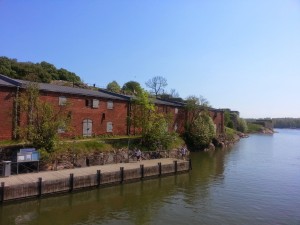
The sky-high living expenses in the Finnish Capital meant that we had a limited budget for our expenditure. In terms of Finnish food, we lived off Finnish pastries (our favourite being Piirakkat, rye pastry with rice filling), raw salmon on rye crackers and the occasional reindeer meatballs and vendace, fried fish served with garlic sauce. We must mention Salmiakki (salted liquorice candies), which Finnish people go literally mad for. We don’t know if we share the same feeling though…
It was overall a very enriching experience for both of us. We met and networked with many scholars and had great feedback from both our papers. For my first international conference, I have to say I enjoyed it thoroughly.
